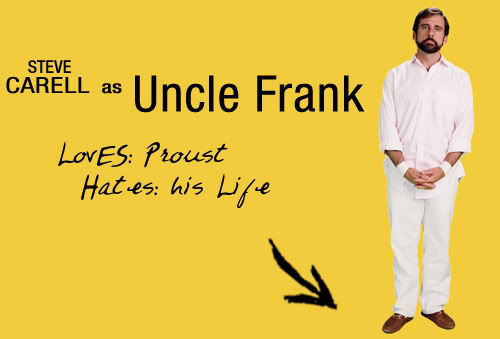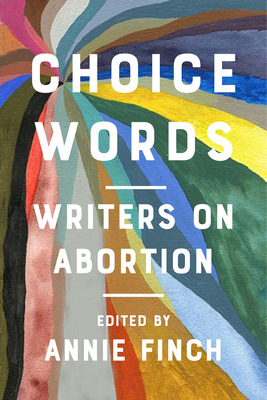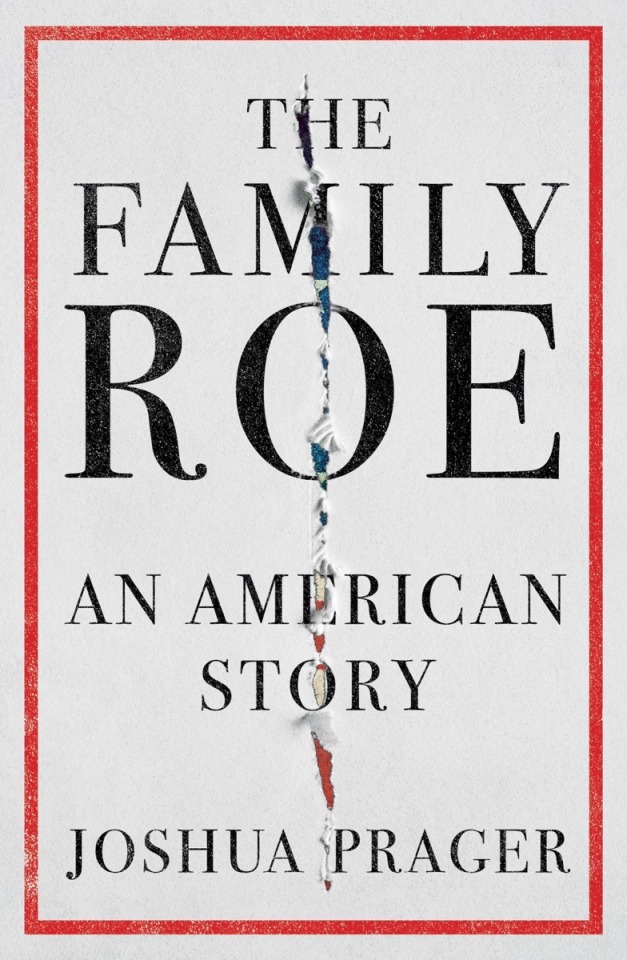#frank ginsburg
Photo




Little Miss Sunshine (2006), dir. Jonathan Dayton, Valerie Faris
“Loser T-shirts” deleted scene
#little miss sunshine#dwayne hoover#frank ginsburg#paul dano#danonation#danocel#steve carell#little miss sunshine deleted scene#little miss sunshine dwayne#little miss sunshine frank#gifset#little miss sunshine gif#paul dano gif#paul dano gifset#danonation gif#dwayne hoover gif#frank ginsburg gif#mine
2K notes
·
View notes
Text
In the film…Frank references French novelist, Marcel Proust, to explain the concept; to suffer is to grow and in suffering, you become who you are…so you must endure the hardships, because without them, you learn nothing, and to avoid them is a waste.
“Fuck beauty contests. Life is one fucking beauty contest after another…do what you love, and fuck the rest.” —Dwayne Hoover, Little Miss Sunshine
8 notes
·
View notes
Text










ʟɪᴛᴛʟᴇ ᴍɪss sᴜɴsʜɪɴᴇ ₂₀₀₆
#little miss sunshine#littlemisssunshine#dwayne hoover#frank ginsburg#railroadgifs#paul dano#steve carell
87 notes
·
View notes
Text

little miss sunshine (2006)
#film aesthetic#film journal#movie journal#movies#aesthetic#little miss sunshine#paul dano#dwayne hoover#danonation#greg kinnear#richard hoover#toni collette#sheryl hoover#steve carell#frank ginsburg#abigail breslin#olive hoover#alan arkin
88 notes
·
View notes
Text
I'm not the main character, I'm the middle aged mentally ill while man



#it 2019#Stanley uris#little miss sunshine#frank ginsburg#will graham#nbc hannibal#hannibal#feel free to add on#definitely missed alot#ik all of them are technically main characters but shhhh#it
11 notes
·
View notes
Text
The Lincoln Trio Plays Contemporary Piano Trios from Chicago
The Lincoln Trio Plays Contemporary Piano Trios from Chicago
Cedille CDR 90000 211
This is another entry in an ongoing series of music for piano trio by the tried and true Lincoln Trio. In this fine release they play a delightful collection of five works (three are world premiere recordings) by living composers. This is their eighth Cedille release by my count. It is the second recording of piano trios from Chicago based composers, a follow up to their…

View On WordPress
#architecture#Augusta Read Thomas#Bill Maylone#Cedille Records#Chicago#Classical Music#Composers#contemporary music#Daniel Burnham#Frank Lloyd Wright#James Ginsburg#Jeanne Gang#Lincoln Trio#Mischa Zupko#Modern Music#Music#New Music#Piano Trio#Pulitzer Prize#Ralph Shapey#Roosevelt University#Shawn E. Okpebholo#Shulamit Ran#Stacy Garrop#University of Chicago#Wheaton College#Will Liverman
0 notes
Text

Joel Pett, Lexington Herald Leader
+
An early assessment of the legacy of Mitch McConnell. Brutal, frank and correct. "No one has done more to destroy the federal judiciary than Mitch McConnell. This is the guy who, under Obama, decided to block as many judicial nominations as possible, for no reason other than to leave the seats open so Trump could come in and fill them. This is the guy who violated every known norm to hold open Justice Antonin Scalia’s seat, ostensibly because it came open in an election year, only to fill Justice Ruth Bader Ginsburg’s seat when people were already voting in the 2020 election. I think he made a lot of Americans wake up and realize that this was all Calvinball, that he had no principles to begin with. But even more than that, Mitch McConnell was the guy who realized you don’t need to win elections to enact Republican policy. You don’t need to change hearts and minds. You don’t need to push ballot initiatives or win over the views of the people. All you have to do is stack the courts. You only need 51 votes in the Senate to stack the courts with far-right partisan activists like Aileen Cannon and Matthew Kacsmaryk. And they will enact Republican policies under the guise of judicial review, policies that could never pass through the democratic process. And those policies will be bulletproof, because they will be called “law,” and Democrats will need at least a century to win back the courts. Anyone who believes in an independent judiciary with any integrity should loathe McConnell to their bones."
[How Mitch McConnell Destroyed the Independent Federal Judiciary :: McConnell realized you don’t need to win elections to enact GOP policy. You just have to stack the courts. ::: BY DAHLIA LITHWICK AND MARK JOSEPH STERN]
#Joel Pett#Mitch McConnell#independent judiciary#American Democracy#Slate Magazine#Dahlia Lithwick#Mark Joseph Stern
4 notes
·
View notes
Text
Get to know me ig?
hiii!
my names elizabeth but i prefer eliza
im lesbian and use she/her pronouns
i like to sing and write stupid shit <3
im a libra, my birthdays September 23
i have seven cats (cinnamon, buddy, chloe, frank sinatra, chuck norris, michael jackson and ruth bader ginsburg)
i have the attention span of a goldfish
i ship duncney, aleheather, gidgette and gwent (ozzy is okay idk)
favorite td season is tdi
my favorite artists are mitski, phoebe bridgers and cigarettes after sex
favorite songs are first love/late spring, not strong enough and sweet
idk what else to say tbh it’s late and im sleep deprived ❤️❤️❤️
6 notes
·
View notes
Text
"He looks back and decides that all those years he suffered– Those were the best years of his life ‘cause they made him who he was. All those years he was happy, y’know, total waste. He didn’t learn a thing."
-Frank Ginsburg, Little Miss Sunshine
2 notes
·
View notes
Photo



Little Miss Sunshine (2006), dir. Jonathan Dayton, Valerie Faris
“Surfing” deleted scene
“... Frank and Dwayne go out on surfboards to have their exchange, their kind of bonding moment.”
#little miss sunshine#dwayne hoover#Frank Ginsburg#paul dano#danonation#danocel#steve carell#little miss sunshine deleted scene#little miss sunshine dwayne#little miss sunshine frank#gifset#little miss sunshine gif#paul dano gif#paul dano gifset#danonation gif#dwayne hoover gif#frank ginsburg gif#mine
147 notes
·
View notes
Note
Okay so first you're a big inspiration to me, you're so cultivated and your writing is *chief kiss*.
Second: who are your favourite poets? (I know it's a tough question but I just got home from my poetry class and there's nothing else on my mind)
cultivated!? that is my new favourite word - it sounds way better than nerd, haha
and snap! cus I got your ask on my walk home from romantic lit class <3
as for my favourite poets? that's a difficult question (but a fun one!)
I consistently gravitate towards Percy Bysshe Shelly, Charlotte Smith, Anne Bannerman, Walt Whitman, Alfred Lord Tennyson, Frank O'Hara, Christina Rossetti, and Emily Brontë.
but there are also specific poems I adore like 'Lines of Life' by Letitia Elizabeth Landon, 'Fugue' by Louise Glück, Lady Mary Wroth's Sonnet Sequence, 'Rime of the Ancient Mariner' by Samuel Taylor-Coleridge, Allen Ginsburg's 'Howl,' and 'The Wasteland' by T.S. Eliot.
I’d love to know about yours!
#thank you <33#discovering new poets daily as a uni student#but it also means I have very few books with me rn#and I need to search for everything I wanna read so pls recs are so welcome#CO Posts#answered asks#poetry
5 notes
·
View notes
Text
ten favourite characters from ten different fandoms. in no particular order:
finn shelby, peaky blinders.
jessamine lovelace, the infernal devices.
lady macbeth, shakespeare (me and joey make the shakespeare fandom).
emily prentiss, criminal minds.
jules vaughn, euphoria.
joy, everything everywhere all at once.
fleabag, fleabag.
judy hale, dead to me.
steven crain, the haunting of hill house.
frank ginsburg, little miss sunshine. (michael scott by extension he's so. me)
tagged by: @hightabled ilysm judge it all u want
4 notes
·
View notes
Text
Druid Heights: Northern California Legacy

Go north of San Francisco, through the woods of Marin, up the southern side of Mount Tam, and you may find what remains of Druid Heights. This is the name of the bohemian community that settled there in 1954, led by poet Elsa Gidlow. Gidlow was best known for On a Grey Thread, thought to be the first book of openly lesbian love poetry published in North America. Initially envisioned as a secluded retreat, Druid Heights quickly attracted other trailblazers: Beats like Allen Ginsburg, queer radicals, women's liberation activists who came to socialize or get away from socializing. For many, it was a place to party and listen to music: The Rolling Stones, Neil Young, and the Eagles all played there. A few made it their home, like philosopher Alan Watts who moved there in 1971, had a library built, and died soon after. The countercultural figures who visited this fabled five acres remain in popular memory. The buildings they stayed in have had a more precarious history.
These were designed by Roger Somers, a carpenter-turned-architect who with his white beard and maharishi clothing looked somewhat like a druid himself. A Somers house is wooden and seemingly inspired by Indonesian batak houses, Japanese stone gardens, Frank Lloyd Wright's Usonian fancies, and The Hobbit. They made perfect sense, but probably only if you were on any number of drugs at any number of parties that made the retreat infamous.
The party lasted long after Druid Heights' heyday—lasted probably until 2001, when Somers died in his hot tub on site. It was definitely over by 2006 after the National Parks Service, which had used eminent domain to seize the land in 1977, evicted all residents who did not have permanent leases. Since then, the forest has slowly reclaimed its territory, and only the occupied buildings are in sound condition.
The Parks Service has shown little interest in maintaining what is left. In 2017, a campaign was launched to save the Heights, to little effect; and the few remaining residents are in their 80s. Is this a fitting end? Watts once wrote: "What makes this world a beautiful experience is the impermanence and mutability of all things." Druid Heights was based on spontaneity, anarchism, improvisation—a preservation society is the opposite of this. In a culture of constant growth and productivity, one in which we expect all things to remain available at all times, to let the Heights decay into the past is perhaps the most countercultural action to take. But the Heights also represents an authenticity rare in a radically changed Bay Area that has allowed its cultural heritage to vanish or corporatize; perhaps then the most subversive act is to save it, and to save it for the same reasons we want to save the redwoods that surround it: because it is unique, because it is there, because places like it can't grow just anywhere and might never come again.

Elsa Gidlow in her shoji room.






Gidlow and Watts in the gardens of Druid Heights.



Gidlow in her bedroom surrounded by her books.

8 notes
·
View notes
Text
Frank Ginsburg from Little Miss Sunshine is mlm!



#coming out as being deeply attracted to steve carell#little miss sunshine#lgbt history#lgbtq community#lgbt#lgbt rights#lgbtq#lgbtpeople#mlm#mlm positivity#mlm pride#mlm representation
6 notes
·
View notes
Photo




More Nonfiction Book Recs: Women’s Rights Are Human Rights
Choice Words edited by Annie Finch
This landmark literary anthology of poems, stories, and literary essays about abortion, Choice Words: Writers on Abortion, is a powerful collection of timely pieces on the struggle to defend reproductive rights. Twenty years in the making, this book spans continents and centuries; the manuscript includes Audre Lorde, Margaret Atwood, Lucille Clifton, Amy Tan, Gloria Steinem, Ursula Le Guin, Gwendolyn Brooks, Joyce Carol Oates, Gloria Naylor, Dorothy Parker, Ruth Prawer Jhabvala, Anne Sexton, Ntozake Shange, Sholeh Wolpe, Ai, Jean Rhys, Mahogany L. Browne, Shirley Geok-lin Lim, Frank O’Hara, Vi Khi Nao, Sharon Olds, Judith Arcana, Alice Walker, Lucille Clifton, Molly Peacock, Carol Muske-Dukes, Mo Yan, Leslie Marmon Silko, Bobbie Louise Hawkins, Kathy Acker, Anne Sexton, Langston Hughes, Sharon Doubiago, and numerous other classic and contemporary writers including voices from Canada, France, China, India, Iran, Ireland, Kenya, and Pakistan.
Ruth Bader Ginsburg by Jane Sherron De Hart
In this comprehensive, revelatory biography - fifteen years of interviews and research in the making - historian Jane Sherron De Hart explores the central experiences that crucially shaped Ginsburg’s passion for justice, her advocacy for gender equality, and her meticulous jurisprudence.
At the heart of her story and abiding beliefs is her Jewish background, specifically the concept of tikkun olam, the Hebrew injunction to “repair the world,” with its profound meaning for a young girl who grew up during the Holocaust and World War II.
Ruth’s journey begins with her mother, who died tragically young but whose intellect inspired her daughter’s feminism. It stretches from Ruth’s days as a baton twirler at Brooklyn’s James Madison High School to Cornell University to Harvard and Columbia Law Schools; to becoming one of the first female law professors in the country and having to fight for equal pay and hide her second pregnancy to avoid losing her job; to becoming the director of the ACLU’s Women’s Rights Project and arguing momentous anti-sex discrimination cases before the U.S. Supreme Court.
All this, even before being nominated in 1993 to become the second woman on the Court, where her crucial decisions and dissents are still making history. Intimately, personably told, this biography offers unprecedented insight into a pioneering life and legal career whose profound mark on American jurisprudence, American society, and our American character and spirit will reverberate deep into the twenty-first century and beyond.
Credible by Deborah Tuerkheimer
In this landmark book, a former prosecutor, legal expert, and leading authority on sexual violence examines why allegations of sexual misconduct and abuse are often not believed - and why we live in a nation that is both culturally and legally structured to doubt and dismiss accusers.
Sexual misconduct accusations rest on opposing viewpoints: her word against his. How do we decide who is telling the truth? The answer comes down to credibility. But as this eye-opening book reveals, deciding which side to believe isn’t as straightforward as it seems. Our judgment is complicated by invisible forces - false assumptions and hidden biases imbedded in our culture, our legal system, and our psyches - that create blind spots impairing our ability to accurately hear and respond fairly.
In Credible, Deborah Tuerkheimer provides a much-needed framework to help us better understand credibility, explaining how we perceive it, how and why our perceptions are distorted, and how those distortions harm individual lives. Because of societal hierarchies and inequalities, who we disbelieve is predictable and patterned, leading to what Tuerkheimer calls the “credibility discount” - our dismissal of certain kinds of statements by certain kinds of speakers, including women, BIPOC, LGBTQIA, immigrants, and other marginalized individuals.
The rise of the #MeToo movement has exposed this inequity - how these victims have been badly served by a system that is not designed to protect them. Using case studies, moving first-hand accounts, science, and the law, Tuerkheimer identifies patterns and their causes, analyzes the role of power, and examines the close, reciprocal relationship between culture and law - to help us more clearly determine who and what is credible.
#MeToo has touched off a massive reckoning. Credible helps us forge a path forward to ensuring fair, equitable treatment of the countless individuals affected by sexual misconduct.
The Family Roe by Joshua Prager
Despite her famous pseudonym, “Jane Roe,” no one knows the truth about Norma McCorvey (1947–2017), whose unwanted pregnancy in 1969 opened a great fracture in American life. Journalist Joshua Prager spent hundreds of hours with Norma, discovered her personal papers - a previously unseen trove - and witnessed her final moments. The Family Roe presents her life in full. Propelled by the crosscurrents of sex and religion, gender and class, it is a life that tells the story of abortion in America.
Prager begins that story on the banks of Louisiana’s Atchafalaya River where Norma was born, and where unplanned pregnancies upended generations of her forebears. A pregnancy then upended Norma’s life too, and the Dallas waitress became Jane Roe.
Drawing on a decade of research, Prager reveals the woman behind the pseudonym, writing in novelistic detail of her unknown life from her time as a sex worker in Dallas, to her private thoughts on family and abortion, to her dealings with feminist and Christian leaders, to the three daughters she placed for adoption.
Prager found those women, including the youngest - Baby Roe - now fifty years old. She shares her story in The Family Roe for the first time, from her tortured interactions with her birth mother, to her emotional first meeting with her sisters, to the burden that was uniquely hers from conception.
The Family Roe abounds in such revelations - not only about Norma and her children but about the broader “family” connected to the case. Prager tells the stories of activists and bystanders alike whose lives intertwined with Roe. In particular, he introduces three figures as important as they are unknown: feminist lawyer Linda Coffee, who filed the original Texas lawsuit yet now lives in obscurity; Curtis Boyd, a former fundamentalist Christian, today a leading provider of third-trimester abortions; and Mildred Jefferson, the first black female Harvard Medical School graduate, who became a pro-life leader with great secrets.
An epic work spanning fifty years of American history, The Family Roe will change the way you think about our enduring American divide: the right to choose or the right to life.
#women's rights#nonfiction#book recs#book recommendations#reading recommendations#library books#TBR pile#tbr#to read#booklr
4 notes
·
View notes
Text
Editor's Note: This analysis is part of the USC-Brookings Schaeffer Initiative for Health Policy, which is a partnership between Economic Studies at Brookings and the University of Southern California Schaeffer Center for Health Policy & Economics. The Initiative aims to inform the national health care debate with rigorous, evidence-based analysis leading to practical recommendations using the collaborative strengths of USC and Brookings. We gratefully acknowledge financial support from The Commonwealth Fund.
Introduction
There is a great deal of controversy and uncertainty regarding profits in the Medicare Advantage (MA) program. Interest in these issues is growing as the share of beneficiaries grows. The Medicare Payment Advisory Commission, or MedPAC, recently reported that MA enrollment grew 10% from July 2020 to July 2021. This means MA accounted for 46% of all Medicare beneficiaries in 2021, with payments to MA plans totaling $350 billion.
A recent visible exchange of facts and interpretations of some data by Berwick and Gilfillan, Halvorson, Crane, and Ginsburg and Lieberman has highlighted how incomplete existing data are and how that limits the ability to arrive at conclusions about market performance.
The debate is focused on whether MA plans are “overpaid” and the degree to which current regulatory arrangements are likely to constrain potential overpayments. The concern is that MedPAC reports that MA plans continue to be paid 104% of traditional Medicare Fee for Service (FFS) costs, and payment benchmarks remain at 108% of traditional Medicare FFS spending. Since 2010 and the enactment of the Affordable Care Act (ACA), Medicare Part C or MA policy has aimed to improve alignment of plan costs and payments, in part by requiring that health plans in MA attain a Medical Loss Ratio (the share of premiums spent on medical care) of 0.85.[1] The ACA also reduced some payments to MA plans. Together these policy changes sought to reduce overpayments that had been previously documented.
At the time, the Congressional Budget Office (CBO) and the Medicare actuary predicted large scale exit from MA markets. The actual experience has been quite different with strong market entry, and Security Exchange Commission (SEC) filings and earnings reports suggest that MA was the source of earnings growth for several large insurers (e.g., UnitedHealthcare, Humana). MA is now projected to enroll 50% of Medicare beneficiaries by 2025 or sooner.
The MA payment structure allows for several ways for plans to earn profits. MA plans are paid based on annual premium bids made against a market benchmark that is set administratively by the Centers for Medicare and Medicaid Services (CMS) under statutory authority and depends in part on the quality rating achieved by a plan. That bid serves to establish plan revenues.
The difference between those revenues and incurred costs are plan profits. A portion of the difference between plan bids and the market benchmark is returned to the plan in the form of a “rebate” (or a form of shared savings). That rebate must be used to provide extra benefits to beneficiaries that can entail reduced cost sharing, lower premiums, or supplemental benefits like vision, hearing, and dental services. The projected premium for the supplemental benefit associated with the rebate is based on an actuarial estimate, and thus differences between the projected premium and actual costs are profits.
The Medical Loss Ratio (MLR) requirements for MA plans require that the difference between revenues and medical costs cannot exceed 15% of total revenues. In addition, optional supplemental benefits (distinct from the mandatory supplemental benefits associated with rebates) can be offered by MA plans at a cost to beneficiaries. Roughly 38% of plans offer such benefits. A plan’s margin for these optional supplemental benefits must be less than 15% of premiums. The plan’s margin plus the administrative costs of the benefit must be less than 30% of the premium.
MedPAC reports MA plan margins were roughly 5% in 2019, and these varied considerably by plan type (e.g., Special Needs Plans) and plan ownership. MedPAC and others have noted that bids are increasingly low with 87% of bids coming in at less than traditional Medicare FFS spending; yet plan payments remain at about 104% of traditional Medicare spending. Interpretation of these reports is challenging. Net operating profit margins of 5% are well under the average across industries. In considering these figures it is important to recognize that the total revenue per enrollee represents a substantially higher base than that found in commercial insurance, and that those revenues consist largely of taxpayer dollars.
Margins can be a misleading indicator of profitability, especially in high volume industries. For example, UnitedHealth Group enrolled nearly 7.3 million people. In addition, assessing other standard financial performance ratios can be difficult since most of the large insurers that participate in the MA program sell to multiple insurance markets and own a variety of related and unrelated businesses. Thus, allocating assets to lines of businesses to calculate other markers of financial performance such as returns on assets (ROA), in many cases, requires somewhat arbitrary assumptions or data that are not publicly available.
In this paper, we examine sources of earnings and profits by MA plans. We focus on potential sources of profits, the measurement challenges in tracking profitability, and the role that MLR regulations have in constraining the potential for overpayments. While we recognize investment income can be a significant source of earnings, we do not focus on that source in this analysis. We focus on parent companies and not individual plans. We illustrate our points by appealing to a combination of program wide information on gross profits and margins, and case studies where more complete information is available. Specifically, we illustrate some of our points using examples from SEC 10-K and IRS Form 990 filings from Humana and Kaiser, two large MA plan parent companies. We supplement their publicly reported financial performance metrics with our own calculations of MA plan performance using data from Mark Farrah Associates. We highlight the differences between the commonly reported margin estimates of profitability and ROA. We also explain the limited ability to calculate ROA.
While we recognize the importance of coding as a source of “overpayments” in MA, our focus will be largely on other dimensions of potential profits that have received less attention. This is because the potential for some overpayments due to upcoding has been well established by MedPAC and Jacobs and Kronick. However, obtaining a precise estimate of overpayments that distinguishes legitimate coding from “upcoding” is challenging. To date, inferences about “upcoding” have been made by comparing the diagnoses reported in traditional Medicare claims to those reported by MA plans. Separating legitimate from illegitimate codes through this method is difficult. Some evidence reported in legal actions and investigations of chart review processes are better positioned to uncover such differences but have not been applied on a systematic basis across the program.
5 notes
·
View notes